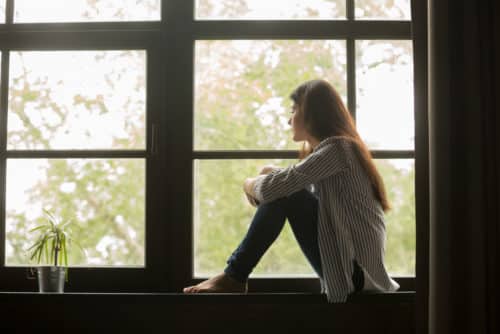 Many people use the terms “loneliness” and “social isolation interchangeably” in everyday conversations. But they do have very different meanings and are not mutually exclusive. So it is important that we understand the differences between these two states, can identify who is at risk of experiencing them and have ways of dealing with these feelings when they appear. When does loneliness become isolation?
Many people use the terms “loneliness” and “social isolation interchangeably” in everyday conversations. But they do have very different meanings and are not mutually exclusive. So it is important that we understand the differences between these two states, can identify who is at risk of experiencing them and have ways of dealing with these feelings when they appear. When does loneliness become isolation?
What is Loneliness?
Loneliness is an emotional state that consists of feeling isolated and separate from others and even feeling empty. You don’t have to be physically alone to experience loneliness; you can still be lonely in a crowd. Making a conscious effort to be around people does not necessarily stop you from feeling lonely– in fact, it can often exacerbate that feeling.
What is Social Isolation?
In contrast to loneliness, social isolation is deliberate. It is the deliberate reduction or total elimination of social contact and involves taking active and/or passive measures to achieve this. Examples of social isolation include: refusing plans with friends, staying at home alone most or all of the time, and avoiding situations in which one would have to interact with others.
The frustration of feeling lonely can lead to a desire to isolate and a person also can be socially isolated but not ever feel lonely- these two states do not always occur together and are not mutually exclusive.
Who is susceptible to loneliness and isolation?
Everybody! But especially the following:
- Older adults who often live alone and are not only at a higher risk of experiencing the death of a loved one but also may have, health concerns and/or ailments that contribute to their isolation.
- Immigrants- adjusting to a different culture, language, and way of life can lead to feelings of loneliness and isolation.
- Marginalized groups- including the LGBTQIA+ community, people of color, people with disabilities, people with mental health challenges, and other racial, ethnic, religious, and sexual minorities.
What can you do to overcome loneliness and isolation?
- Talk to a mental health professional
- Set and follow a daily routine to offer some structure to your day- make sure that you are giving yourself at least 30 minutes of outside time when you are leaving your home.
- Push yourself to stay connected with others- even small interactions count like talking to your barista, or a 5-minute call with a friend.
- Engage in what you consider to be self-care activities. Some examples include: meditation, taking baths, engaging in prayer, and attending mosque/church/temple…
- Join a support group in your area or online- although in person would be ideal for creating a real sense of connection to others and a feeling of community.
Feeling lonely or isolated is nothing to be ashamed of- we’ve all at one point or another experienced these feelings. So if you or someone you know may be experiencing loneliness or isolation, please call to book your first session or simply start with a free 15-minute phone consultation.

